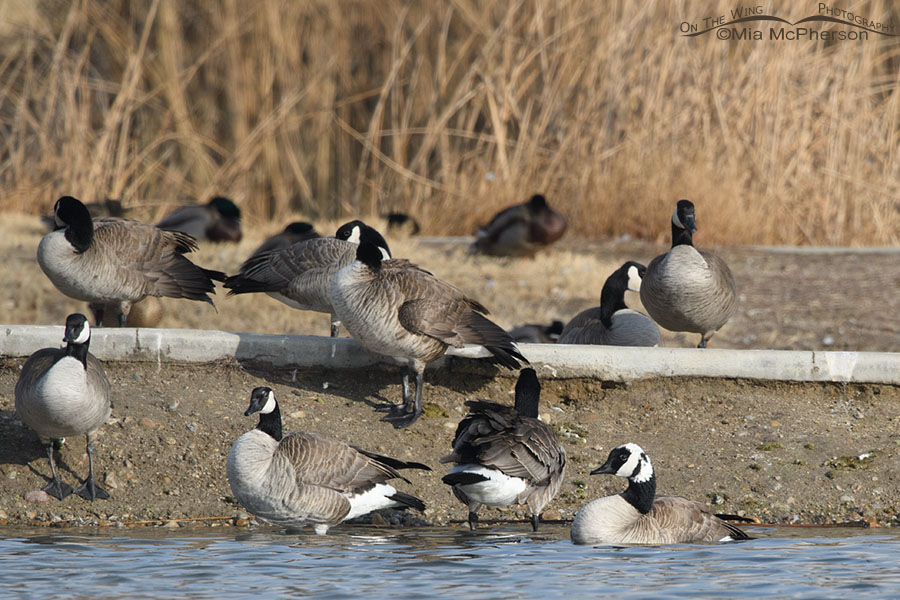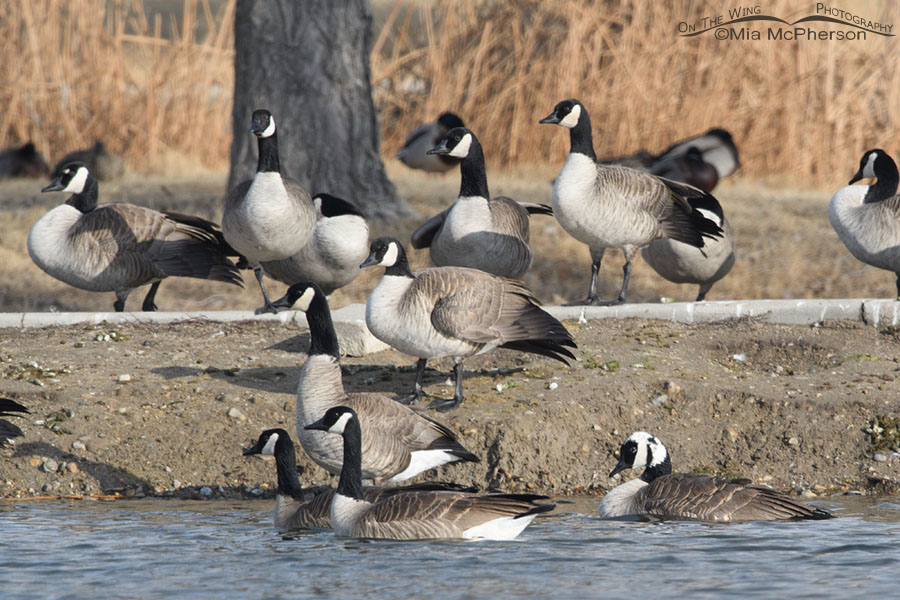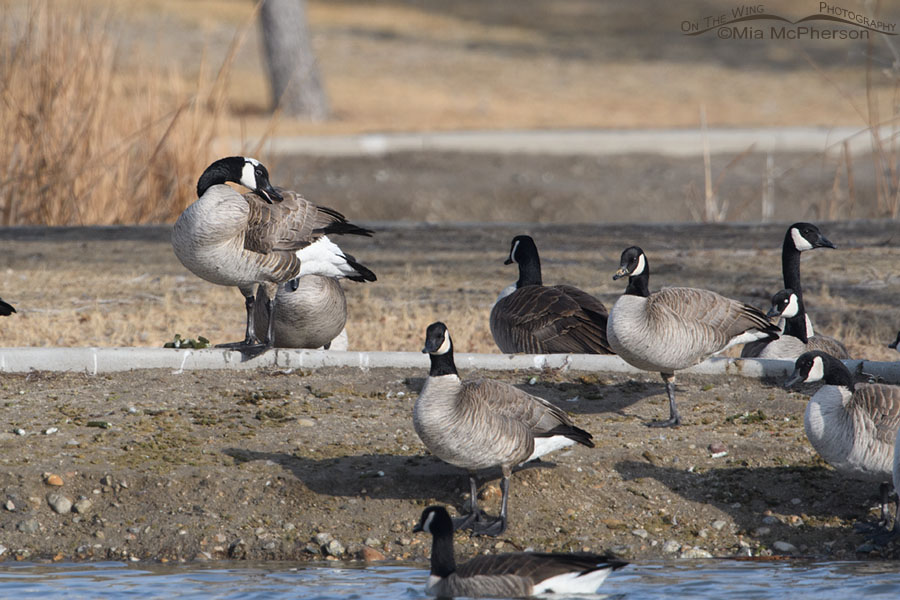 Leucistic Canada Goose with regular geese – Nikon D500, f7.1, 1/1600, ISO 500, Nikkor 500mm VR with 1.4x TC, natural light
Leucistic Canada Goose with regular geese – Nikon D500, f7.1, 1/1600, ISO 500, Nikkor 500mm VR with 1.4x TC, natural light
I didn’t see any American Robins feeding on crabapples yesterday but I did find a leucistic Canada Goose at my local pond.
The leucistic Canada Goose was bathing when I first noticed it along the shoreline. My photos were taken from the opposite side of the pond for documentary purposes.
I thought the white markings on the left side of the head of the goose were interesting. I really wish this odd looking goose had been closer to me.
 Canada Goose with leucism on its head – Nikon D500, f7.1, 1/1250, ISO 500, Nikkor 500mm VR with 1.4x TC, natural light
Canada Goose with leucism on its head – Nikon D500, f7.1, 1/1250, ISO 500, Nikkor 500mm VR with 1.4x TC, natural light
Leucism can affect part of a bird or the whole bird. In this case the rest of the Canada Goose appears normal. Only the goose’s head shows the plumage variation so I would call this Canada Goose partially leucistic although some people might call it piebald or partially albino.
What is Leucism?
From Wikipedia:
‘Leucism’ is often used to describe the phenotype that results from defects in pigment cell differentiation and/or migration from the neural crest to skin, hair, or feathers during development. This results in either the entire surface (if all pigment cells fail to develop) or patches of body surface (if only a subset are defective) having a lack of cells that can make pigment.
David Sibley, the author of “The Sibley Guide To Birds”, shares his thoughts on abnormal coloration in birds here. I have that post bookmarked and refer to it whenever I find a bird with abnormal coloration or leucism.
 Leucistic Canada Goose on the shoreline – Nikon D500, f7.1, 1/1600, ISO 500, Nikkor 500mm VR with 1.4x TC, natural light
Leucistic Canada Goose on the shoreline – Nikon D500, f7.1, 1/1600, ISO 500, Nikkor 500mm VR with 1.4x TC, natural light
The right side of the Canada Goose’s head looked normal except for a spot of white above the cheek patch that extends from the left side of its head.
Over the years I have photographed other birds with abnormal white plumage including a Black-billed Magpie, Red-tailed Hawk, Bald Eagle, an American Robin with one white tail feather, and white Eared Grebes on the Great Salt Lake.
Not only am I always looking for birds I am also looking for the odd duck, or in this case, the odd goose.
Life is good.
Mia
To view more of my Canada Geese photos plus information about this species click here.


I had the same thought as Liz. Whatever the reason for the color variation, it is a very attractive goose.
How fascinating – and something that I suspect people less knowledgeable or observant than you wouldn’t even notice. Their loss.
Fun find!
Great photos, Mia.
A nod to Shirley for naming your Canada Goose. I do that as well. Mia, your leucistic Canada Goose looks like one of those old-fashioned cartoons of a person with mumps or a toothache having bandages wrapped around their heads.
We have a Leucistic Canada Goose here in Nelson, BC but Lucy doesn’t have as much white on her head as yours. We also have a Crow with Leucism on the wings. Very interesting Mia. This is changing the subject but have noticed some birds nest that appear to be hanging from branches so was reading about how some birds use Spider webs to hold nesting material together. Amazing little two legged creatures. Take care!